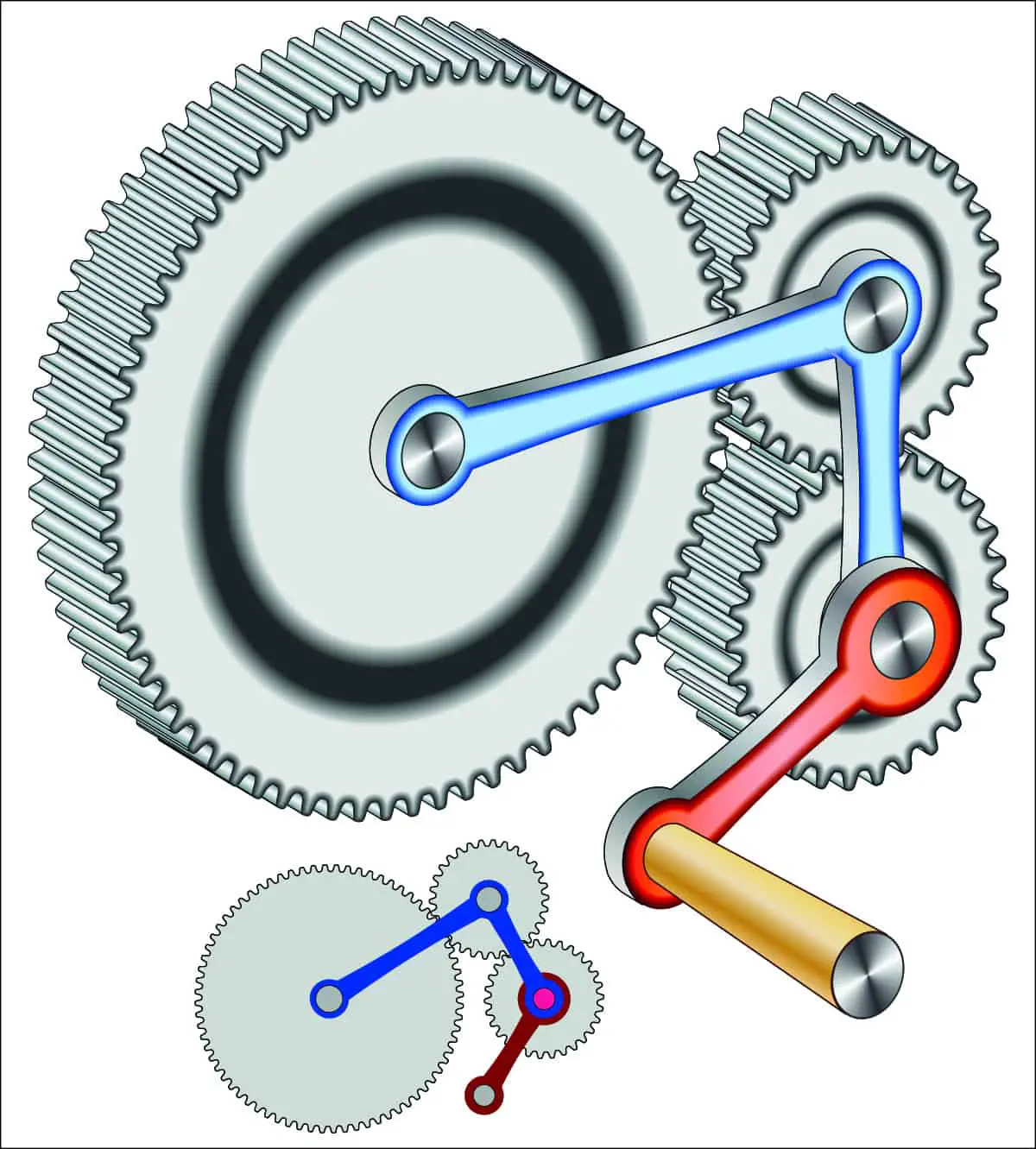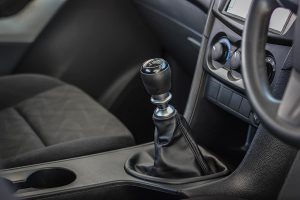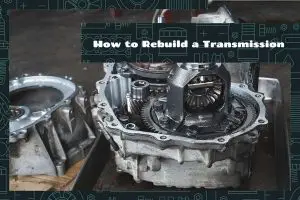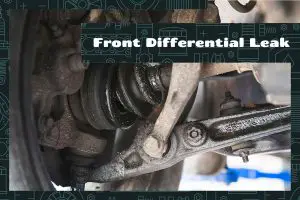Navigating the world of cars and their mechanics can seem daunting, especially when terms like “gear ratio” start popping up. Yet, this concept is not as complicated as it might initially appear, and understanding it can truly transform your driving experience. Mastering gear ratios can lead to improved vehicle performance, better fuel efficiency, and a smoother ride.
A gear ratio is a relationship between the rotation of the input gear (engine output) and the output gear (wheels). Essentially, it determines how many times the engine needs to turn for the wheels to complete a full rotation. A gear ratio calculator is a tool that can easily determine this ratio, simplifying maintenance decisions and enhancing your car’s performance.
In the following sections, we will delve deeper into the importance of gear ratios, explain how they affect your car’s speed, guide you through calculating your own gear ratio, and offer insights into using gear ratio calculators for optimal vehicle performance.
What Is a Gear Ratio?

When you change gears in your vehicle, you’re essentially altering the gear ratio. But what exactly does this mean?
Gear ratios are all about the relationship between two gears—the drive gear and the driven gear. The drive gear is attached to the engine, and when it rotates, it moves the driven gear, which is connected to the car wheels. The gear ratio is determined by the number of teeth on each gear. If the drive gear has 20 teeth and the driven gear has 40, the gear ratio is 2:1.
To put it simply, this means that for every two turns of the drive gear, the driven gear will complete one full turn. Higher gear ratios like 3:1 or 4:1 mean the drive gear turns more times to get one turn of the driven gear, which can be beneficial for accelerating or climbing hills. Lower gear ratios like 1:1 mean that the drive and driven gears turn at the same speed, ideal for cruising at high speeds.
Different Types of Gear Ratios
Not all gear ratios are created equal. Vehicles come with different types of gear systems, each designed to serve a specific purpose.
- Final Drive Ratio refers to the last set of gears in the drivetrain, typically found in the differential. It’s a fixed ratio, determining how many times the driveshaft (connected to the engine) needs to rotate to turn the wheels once.
- Transmission Gear Ratio is found in the gearbox and varies with each gear shift. The lower gears have a high transmission gear ratio, providing power for acceleration. As you shift up, the gear ratio decreases, letting the car maintain speed with less engine power.
- Total Gear Ratio combines both the final drive and transmission gear ratios. This overall ratio is the one that really matters when it comes to the relationship between engine RPM and wheel speed.
How to Calculate Your Gear Ratio
Knowing your car’s gear ratio isn’t just beneficial for gearheads or professional mechanics; it can also empower car owners to understand their vehicle’s performance characteristics better. Let’s delve into how to calculate your car’s gear ratio.
Step-by-Step Guide to Manual Gear Ratio Calculation
To calculate your gear ratio manually, you’ll need to know the number of teeth on both the drive gear and the driven gear in your transmission.
- Identify the Drive and Driven Gears: The drive gear is connected to the engine, while the driven gear is linked to the wheels. In most vehicles, you can find this information in the user manual or an online specification sheet for your vehicle model.
- Count the Teeth: This can be a bit of a challenge if you’re not familiar with automotive mechanics, but with a bit of patience, it can be done. You could also find this information in your car manual or from your vehicle manufacturer.
- Calculate the Ratio: Once you have the number of teeth on both gears, you can calculate the gear ratio. Divide the number of teeth on the driven gear by the number of teeth on the drive gear. For example, if your drive gear has 10 teeth and your driven gear has 30 teeth, your gear ratio is 3:1.
Here’s a basic example to help you understand what the gear ratios would look like in a standard car with 5-speed manual transmission:
| Gear Number | Gear Ratio | Notes |
| 1st | 3.00:1 | The engine makes 3 revolutions for every 1 revolution of the output gear. The output gear has 3 times more teeth as the input gear. |
| 2nd | 2.00:1 | The engine makes 2 revolutions for every 1 revolution of the output gear. The output gear has 2 times more teeth as the input gear. |
| 3rd | 1.50:1 | The engine makes 1.5 revolutions for every 1 revolution of the output gear. The output gear has 1.5 times more teeth as the input gear. |
| 4th | 1.00:1 | The engine makes 1 revolution for every 1 revolution of the output gear. The output gear has the same number of teeth as the input gear. |
| 5th | 0.50:1 | The engine makes 0.5 revolutions for every 1 revolution of the output gear. The output gear has half as many teeth as the input gear. |
Relationship between Gear Ratio and Vehicle’s Speed

The performance and efficiency of your car, particularly its speed and fuel economy, are directly impacted by gear ratios. Understanding how this works can help you make better decisions about your vehicle’s maintenance and even enhance your driving habits.
Basic Mechanics of Speed Determination
The speed of a car is determined by a combination of factors such as engine power, weight of the car, and the gear ratio. The gear ratio plays a significant role in this by controlling the number of revolutions the engine makes to the number of rotations of the wheels.
A higher gear ratio means more engine revolutions to move the car a certain distance, which results in a lower top speed but higher torque. On the other hand, a lower gear ratio means fewer engine revolutions, which results in a higher top speed but lower torque.
Analyzing the Gear Ratio-Speed Relationship
A high gear ratio is beneficial when you need more torque, such as when starting from a stop or going uphill. The high gear ratio allows the engine to output more power, thus giving you the torque needed to overcome the inertia or gravity.
Once you’re cruising at higher speeds on a flat road, you no longer need that extra torque. That’s when a lower gear ratio comes into play. The lower gear ratio reduces the engine’s RPM, allowing the car to maintain its speed with less power. This leads to better fuel efficiency and less wear on the engine.
How Changing Gear Ratios Affects Vehicle’s Speed
By altering your vehicle’s gear ratio, you can adjust its performance characteristics. If you replace the stock gears in your car’s differential with ones that have a higher gear ratio, your car will have more low-end torque and faster acceleration. But remember, your top speed will decrease as the engine will reach its maximum RPM at a lower speed.
If you switch to a lower gear ratio, your car will have a higher top speed and better fuel economy. However, it might struggle with acceleration and hill climbing because of reduced low-end torque.
Adjusting gear ratios isn’t just for performance enthusiasts or professional mechanics. Knowing how gear ratios affect your vehicle’s speed and performance can be beneficial for everyday drivers too. For example, if you regularly drive in mountainous areas, you might prefer a car with a higher gear ratio for its superior uphill performance.
FAQs
1. How does a higher gear ratio affect my vehicle?
A higher gear ratio means that your vehicle’s engine must rotate more times to turn the wheels once. This leads to increased engine RPM at a given speed, providing more torque. Torque is essentially the rotational force that helps your car to start moving from a standstill or climb steep inclines.
Therefore, vehicles with higher gear ratios typically have better acceleration and hill-climbing ability. However, this comes at the expense of top speed and fuel efficiency. At high speeds, a car with a high gear ratio will have high engine RPM, which can lead to increased fuel consumption and potential wear on the engine.
2. What is the ideal gear ratio for my car?
The ideal gear ratio for your car depends on its intended use. If you mainly drive in the city with frequent starts and stops, or you often drive in hilly or mountainous areas, a higher gear ratio may be preferable for better acceleration and uphill performance.
On the other hand, if you primarily use your car for highway driving and want better fuel efficiency and higher top speed, a lower gear ratio might be more suitable.
3. Is it possible to have too high or too low of a gear ratio?
Yes, it’s possible to have a gear ratio that is too high or too low for your vehicle’s intended use or performance goals. A gear ratio that is too high could lead to poor fuel efficiency and limit your car’s top speed. Your engine might also have to work harder at high speeds, which could lead to increased wear and tear over time.
Conversely, a gear ratio that is too low might result in sluggish acceleration and poor uphill performance. In extreme cases, a very low gear ratio could make it difficult to get the car moving from a stop or climbing steep hills.






